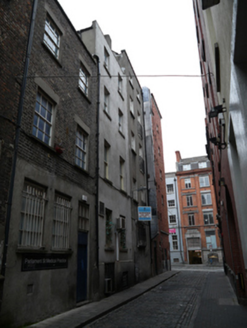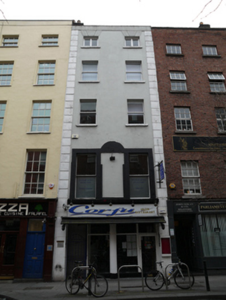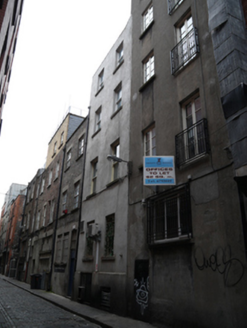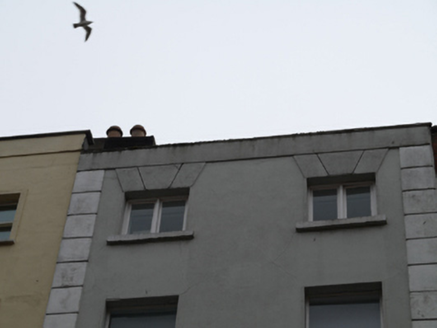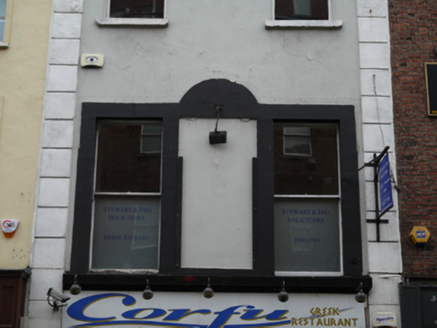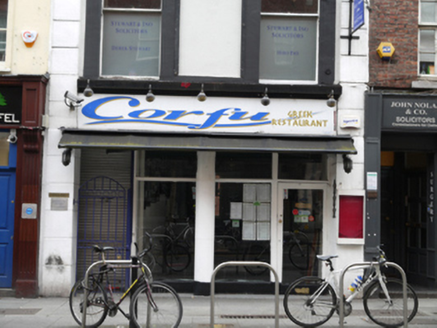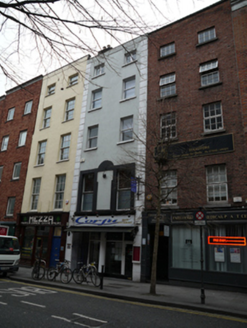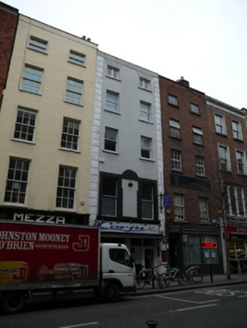Survey Data
Reg No
50020023
Rating
Regional
Categories of Special Interest
Architectural, Social
Original Use
House
Historical Use
Shop/retail outlet
In Use As
Restaurant
Date
1830 - 1850
Coordinates
315455, 234092
Date Recorded
28/02/2015
Date Updated
--/--/--
Description
Attached two-bay five-storey former house, built c.1840, having recent shopfront to front (west) elevation. Now in use as restaurant and offices. Hipped recent slate roof, set perpendicular to street, hidden behind smooth rendered parapet with render coping, and smooth rendered chimneystack having clay pots. Smooth render eaves course over smooth rendered walls, with rusticated quoins to front. Square-headed window openings having masonry sills, smooth rendered voussoirs to fourth floor windows, and shared smooth rendered surrounds to first floor windows, segmental pediment over centre, one-over-one pane timber sliding sash windows, with replacement casement windows to fourth floor openings. Square-headed door and window openings to shopfront. Situated to east side and centre of Parliament Street. Rear elevation to west side and north end of Crane Lane.
Appraisal
Parliament Street is the first example of formal axial planning in mid-eighteenth-century Dublin. George Semple designed the rebuilding of Essex Bridge (1753-55) and his plan showed a new wide street linking the bridge to Dublin Castle; this plan for Parliament Street was implemented by the Wide Street Commissioners in 1762. Many of the buildings, including this one, were altered and rebuilt in the nineteenth century. The decreasing scale of fenestration to the upper floor openings attribute a hierarchy to each floor, creating a pleasantly balanced façade typical of eighteenth- and nineteenth-century townhouses. The retention of some timber sliding sash windows lends a patina of age to the façade.
